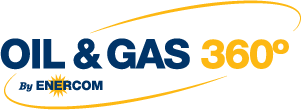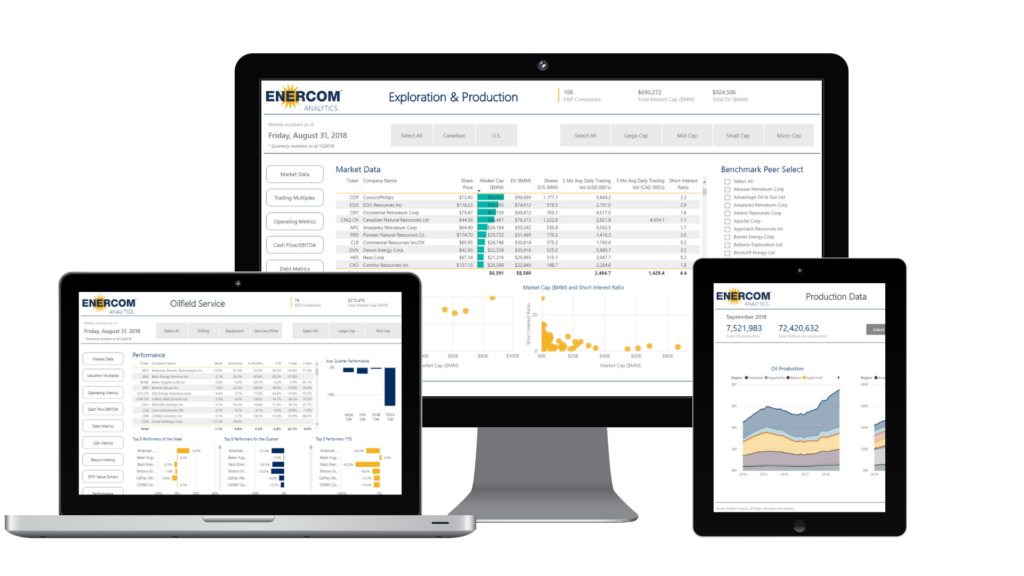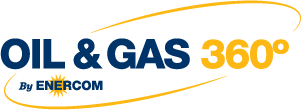Apache, Concho, Pioneer, WPX tell their views
One of the most common themes of the Q3 2017 earnings calls hosted by U.S. shale E&Ps involves a shift in investor sentiment. The debate between growth and returns seems to have settled on returns in recent months, and companies are looking at how to become profitable and return their profits to shareholders.
Looking at cash generation, EnerCom Analytics recently covered the opportunities and challenges of what to do with the cash, examining buybacks, paying down debt, investing in accelerated drilling programs, and other potential uses.
As heavyweight Permian producers weighed in during earnings calls this week, Oil & Gas 360® zeroed in on this line of questioning from the industry securities analysts. Here is how five of the most active Permian players responded to the question.
Apache picks growth

Apache CEO and President John Christmann explicitly mentioned the issue of growth vs returns in his prepared remarks, saying “as Apache enters the 2018 planning season, we are experiencing some natural but very positive short-term budget tension, that is, do we continue investing in our attractive Permian upstream opportunities at what we consider to be the optimal pace for delivering long-term returns or do we pare back and manage the program for cash flow neutrality?”
Apache said it will continue to focus on growth, the results of which will drive long-term returns. “We believe Alpine High is a compelling world-class resource,” Christmann said. “Once ramped to its production potential, Apache will benefit for decades from high returns and free cash flow from a significant portion of our future capital employed.”
Concho picks both

Concho Resources (ticker: CXO) is currently looking to grow production significantly, and predicts crude oil production growth of over 27% in 2017. In its conference call, the company emphasized its ability to generate cash flow and grow with its business model. In the future, Concho expects to operate with some combination of growth and returning capital to investors.
Shale is entering a third phase, the development phase, and the development phase will go on for several decades: Concho
Q: I’m just curious… as a growth company, how you think about this discussion around dividends and other potential cash returns to shareholders as opposed to just plowing back all the capital into what appear to be very high rate of return projects. And how do you think about that balance at this phase of your life?
CXO: Yeah, I think phase of the life is a good way to think about it, because I think that — the business in entering a third phase. We were in the resource capture and then we’ve been through the phase of identifying all the zones. And I think it’s in the development phase and the development phase will go on for several decades. But when you try to look out into the future this business will generate this amount of cash flow, and the tremendous amount of value creation. That’s why we’re so excited about our position. And then the question — the conversation we’re having with our shareholders is how do you maximize the value for our shareholders.
And we’ve been able to demonstrate that we can generate free cash flow and grow and we can do that for a very long period of time. So I think that’s the business model that the industry is trying to define over the next several years, is what is the best answer for the shareholders. And I think it includes some sort of return of capital, it includes some kind of growth and, of course it’s going to include, generate lots of free cash flow.
Q: Could you talk about costs in the Northern Delaware area?
CXO: We have most certainly seen some cost inflation, from the beginning of the year but I would characterize where we are today is more of a stabilized environment you’ve seen that with the rig count. And so cost are relatively consistent right now, but having so many different types of assets within our portfolio it really, it’s hard to talk about just one and it also depends on the mix of sand and many other factors. Overall we’re pretty consistent, right now.
Q: Concho’s done a good job of staying ahead of some of the bottlenecks in the industry, particularly in the midstream side. Do you envision investing more and some more vertical integration at this point?
CXO: To me vertical integration is kind of a bad word almost. And we have invested in infrastructure — and infrastructure we thought was really integral and critical to an activity or in area that we were developing. So I think we’ll continue to do that, but I’m not looking to get into other lines of businesses.
Pioneer picks growth

Pioneer, on the other hand, is not ready to turn off the growth engine. The company is sticking to its “1,000,000 in 10” plan, which envisions 1 MMBOEPD of production in 2026. Pioneer produced 276 MBOEPD in Q3, so this plan calls for significant long-term growth.
Q: The producer question du jour fits growth versus return and corporate strategy when really comes down to asset portfolio manager risk and maximizing value. You have a deeper in inventory than most of your peers and that’s what allows you this 10-year outlook of high growth and low price. Just to harmonize, relatively more mature portfolio stack, when you look at the life of the asset post 1 million barrels growth, do you see a multi-decade plateau where cash distribution has become a defining characteristic of the asset, maybe just your thoughts there, returns versus growth in maximizing shareholder value longer-term is appreciated? Thanks.
PXD: As I mentioned earlier, we’re very heavily focused on getting to free cash flow generation. Actually, our first goal is to hit neutrality and then we’ll work on free cash flow generation. So that certainly one of our goals. But it’s a little bit hard to forecast after 10 years, we’re working hard in the next nine, but years 11 through 20, we had to get to work on, I guess, is what I’d say. But needless to say, we’re going to be drilling probably 6,000 wells over this whole 10-year period, including this year. And as you recall, our information, we discussed over the years has us for the 20,000-well inventory.
Internally, we show up to 35,000 locations depending upon price. And so from that standpoint, we can continue to move ahead from the standpoint of a growth profile. You have to decide at what point you want to limit the number of rigs you want to put to work when it becomes really a very large number operationally and from an efficiency standpoint. But certainly, in our case, we can show growth over the next nine years, as I said, with that issue just so – because of the inventory you mentioned. Others who don’t have maybe the inventory or the set of economic wells to drill might not be in that situation. So it could lead to certain companies like ourselves and some other companies with that larger profile continuing to grow, probably albeit at a lower rate in years 11 through 20.
But you may have an overall plateauing from the Permian Basin at that point simply because others might not be in that situation. Now that said, Permian Basin production at that time will be multiples of what it is today. So it’s going to lead the United States in a very strong position from the standpoint of oil exports and their importance in terms of the global energy picture.
WPX: shareholder returns are key

WPX Energy (ticker: WPX) emphasized its focus on returns, which the company outlined in its preliminary 2018 guidance. The company aims to be cash flow neutral in 2018, and generate free cash flow in 2019 and beyond. It is not yet certain what means it will use to return this cash to shareholders, and will decide based on investor sentiment.
Q: Could you expand on your free cash flow generation in 2019 and beyond comment? I mean, could this free cash flow generation result in a return of capital to investors in the form of dividends or buybacks?
WPX: I think that’s certainly one of the options. As we sit here today, if you think about what investors are calling for today, it’s somewhat different than it was a 1 1/2 to 2 years ago to some degree – maybe not totally, but to some degree. And so, I think what we’ll do is we’re trying to get this message out there. Our plan is to be generating free cash. And we’ll look at, at what investors really are calling for. And that optionality is the key for us. And once again, remember, we’ve got different avenues of cash flow generation, not just on our base development program, but the midstream side as well.
WPX: I love the line of questions, because I think it really points to the work that we’ve done during this transition period, 2016, 2017, 2018. 2018 is really the third year of three. You’ve heard so many people talk about a three-year plan. We’ve got a three year plan, then the next year, end up with another three-year plan.
Well, we’ve had a three-year plan and a two-year plan, and now, we’ve got a one year – the third year of a three-year plan to make this transition. There is a full steam ahead direct course through 2018 that just opens the world up to us in 2019. I’d say, we’re having a ton of really interesting dialogue with the board around what those options could be and how do we make the most of that opportunity. But we are thinking much further out than even 2018 and 2019 in regards to the strategic look for the company.
WPX: What’s critical to that is having a suite of assets that give you that optionality. And as Rick mentioned, it’s not just the great upstream assets, but it’s the midstream assets, too, and the development of those that give us that capability.
Q: Can you guys maybe just talk a little bit about kind of what a leading edge completion looks like today and maybe how that’s evolve for you guys over the last six months or 12 months?
WPX: It definitely has evolved, and it continues to evolve. As you know, the general trend is tighter cluster spacing, more sand, longer laterals, overall stimulate more rock. Obviously, that comes with a direct correlation to the cost of the well. As we’ve continued to push, we’ve been up to 2,500 to 3,000 pounds, and then we’ve tested well north of that.
I think with the service costs we’re seeing today, the commodity price we’re seeing today, and the well performance, that kind of calculus between the three, our state of the art is somewhere around 2,500 pounds per foot tighter cluster spacing, as we continue to move towards that and really looking for those cost efficiencies. How much water do we need to pump; are there more efficient ways to deliver the sand to formation; the things along lines of diverting agents and other relatively low costs adders that could help the overall stimulation.
I would tell you one thing; we’re not done, it’s always going to continue to evolve. And as commodity price moves, service cost moves, technology moves, that continues to kind of stir up the mix. So, we’re really excited about where we’re at. And I’m fully confident we’ll continue to improve our completions from here.


